




Today, most States are actively pursuing policies to reduce greenhouse gas emissions into the atmosphere. For example, in July 2021, the EU countries presented an environmental development plan – the European Green Deal, which includes the main guidelines of green policy, as well as new taxes and subsidies. The plan implies abandoning the use of cars that create CO2 emissions, which is extremely important for the delivery of goods, as well as reducing the use of “carbon credits” in order to really reduce emissions. For this reason, many organizations seek to reduce and further reduce to zero the amount of greenhouse gas emissions released into the atmosphere.
Let’s consider the companies engaged in the delivery of goods and their process of greening the business. A significant part of greenhouse gas emissions in the business processes of such companies arises from:
The reason for the interest of shipping companies in accounting for greenhouse gas emissions are the following factors:
To calculate own carbon footprint, companies are assisted by specially designed CO2 calculators that make calculations based on data on the activities of the organization, the types of transport used and the characteristics of goods. CO2 calculators can be general, universal and accessible to everyone, as well as personal, designed for the needs of a particular company, taking into account the specifics of its activities and plans to reduce emissions.
Using a publicly available carbon footprint calculator helps:
Using a personal calculator helps:
The delivery of the goods to the final consumer consists of the following stages:
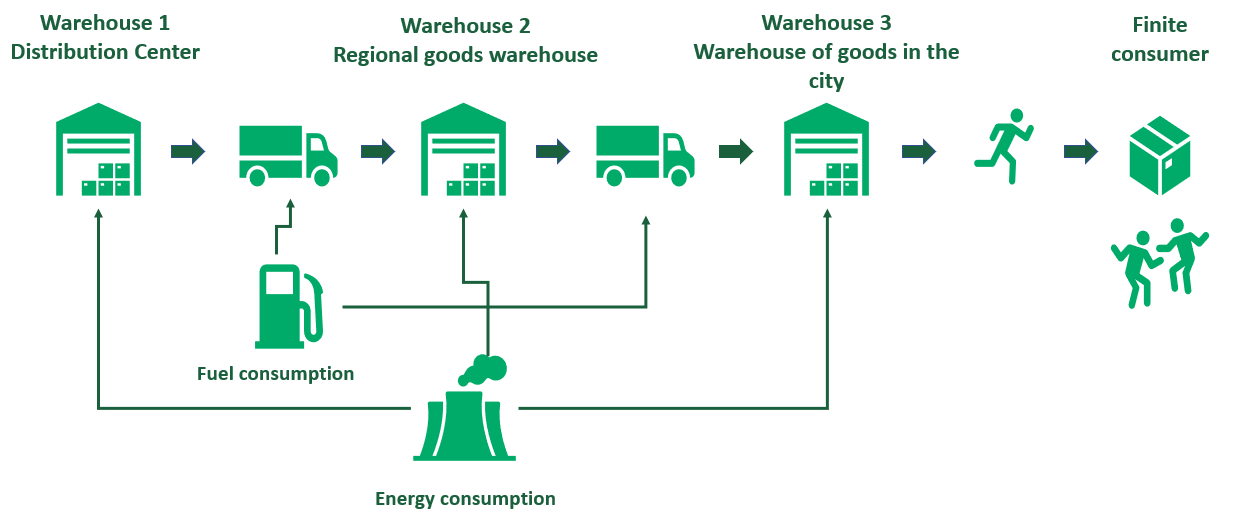
According to international methods, emissions from the storage and transportation of goods are calculated through categories:
In the chain we are considering, greenhouse gas emissions by category occur at every stage, except for courier delivery. In this case:
The courier does not produce emissions in Scope 1 and 2 categories due to the fact that it is not interconnected with the company’s technological processes for storing goods in warehouses and delivering large batches of goods by transport, and also does not consume energy directly from the company’s networks and sources, carrying out the delivery process absolutely independently.
To calculate greenhouse gas emissions from delivery, an individual calculator is being developed that takes into account the logistics structure of the company, characteristics and volumes of goods. Also, in addition, you can create a special application in which the user can receive information about the carbon footprint for each individual delivery.
The experts of the HPVS company are developing an individual interactive calculator that calculates greenhouse gas emissions from delivery, taking into account international methods for calculating greenhouse gas emissions and the following data:
For example, the average weight of the ordered goods required for 3 days of a family of 4 people is approximately 11.2 kg. It includes food (meat and dairy products, fruits and vegetables) and household (household) goods. The family carries out the order in the online store and receives it by courier delivery from the nearest warehouse of goods.
We will calculate greenhouse gas emissions from the entire chain of delivery of goods ordered by the family, starting from the warehouse where they arrived from suppliers to their delivery to the consumers’ apartment. At each stage of delivery, we will take averaged indicators formed on the basis of data from existing companies on the market.
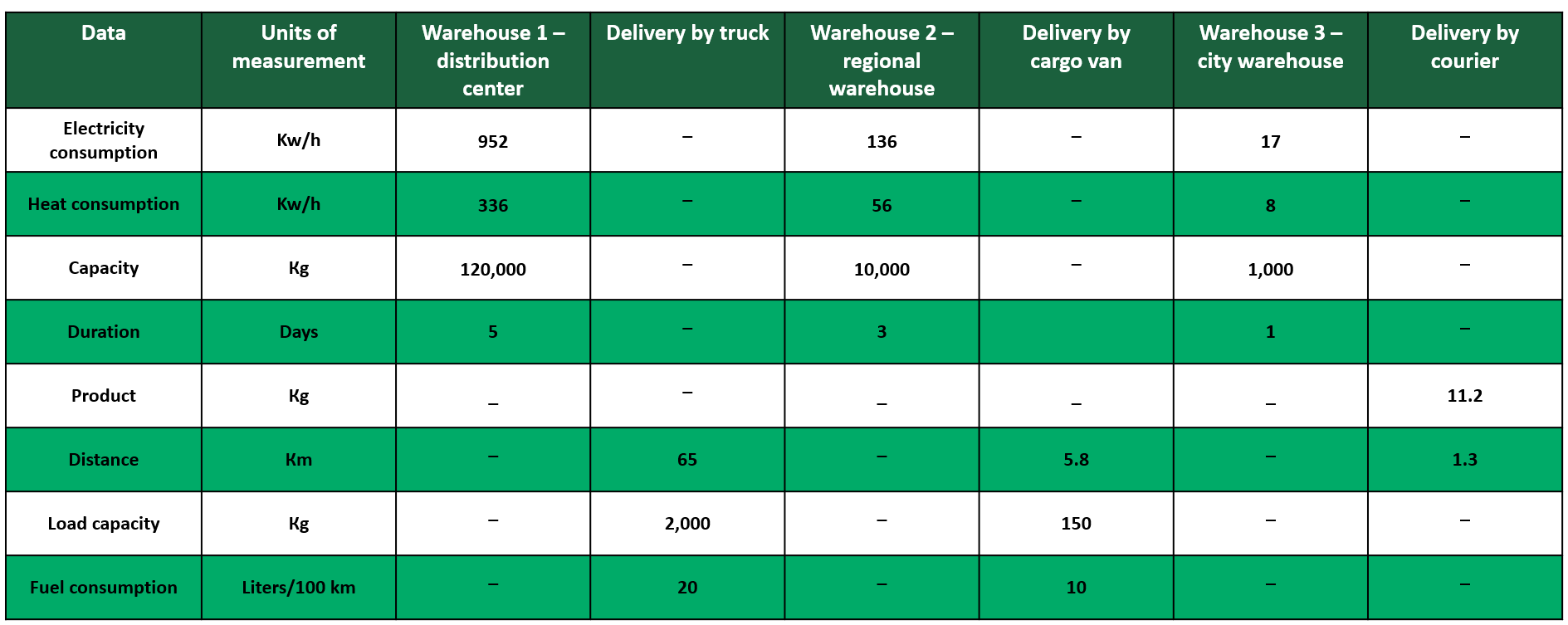
Based on these data, through a calculation model specially developed by our experts, which, by combining actions with specified parameters, produces real emissions from the entire product delivery chain, we can:


*Also, below are additional examples of recalculation of emissions of various greenhouse gases into tons of CO2 equivalent to understand the process of the interactive calculator:
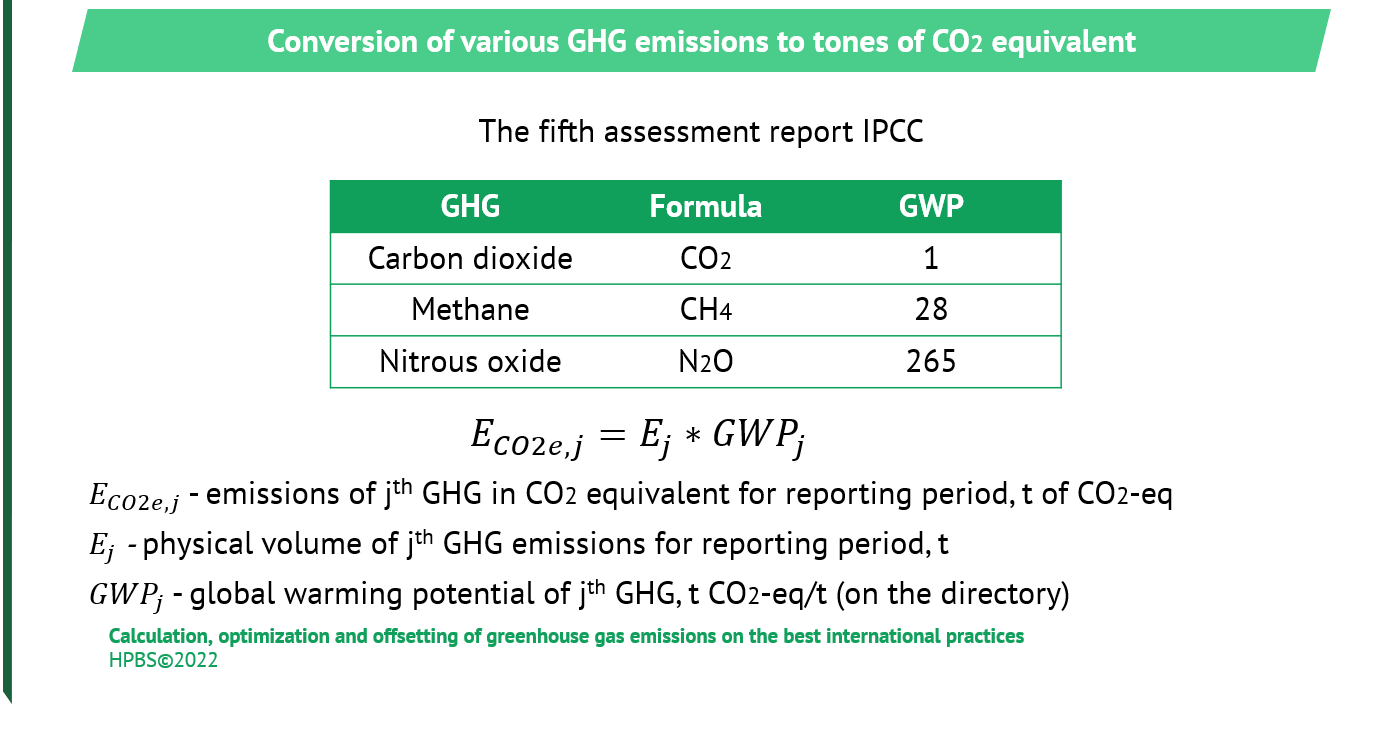
Development of the Concept of Optimization and Compensation of the Carbon Footprint
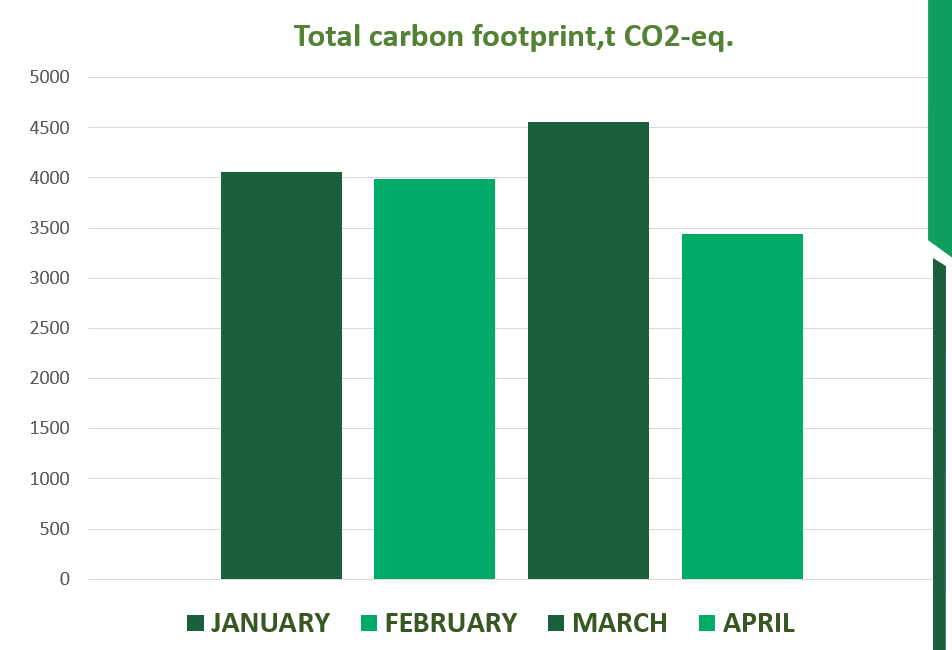
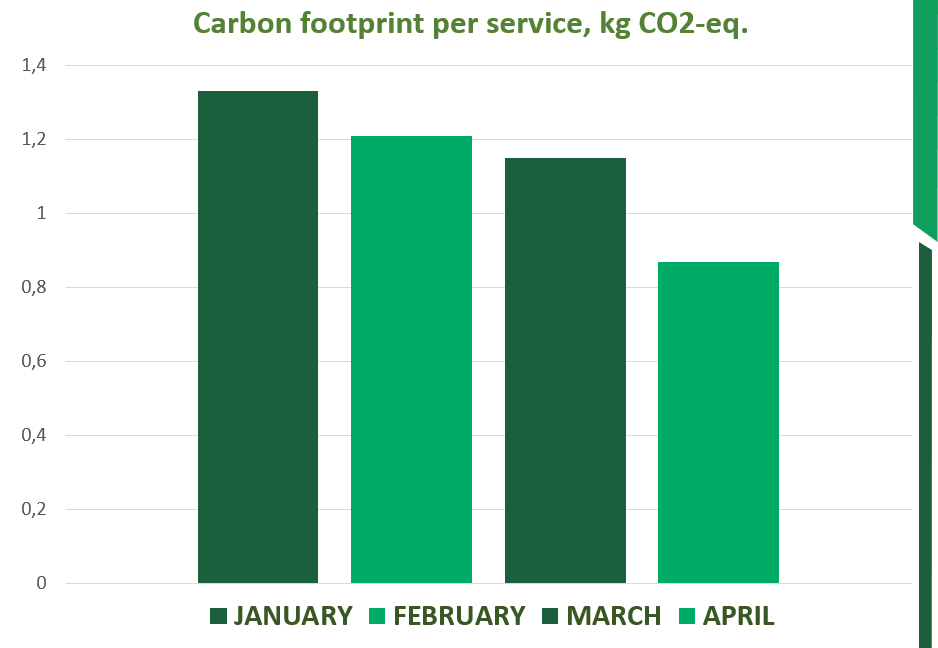
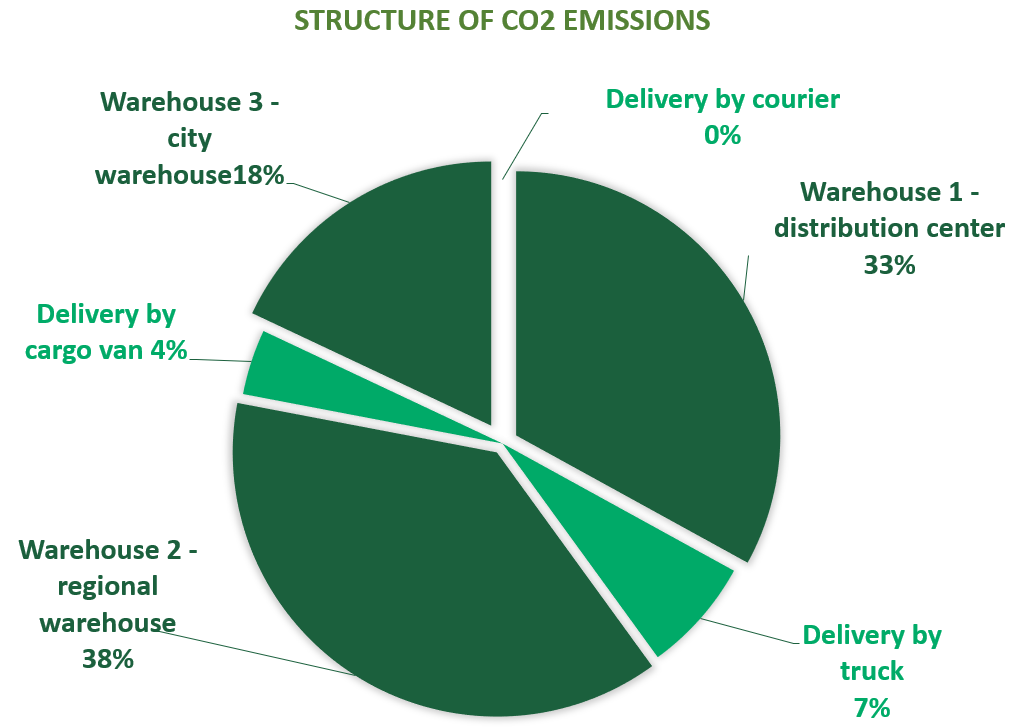
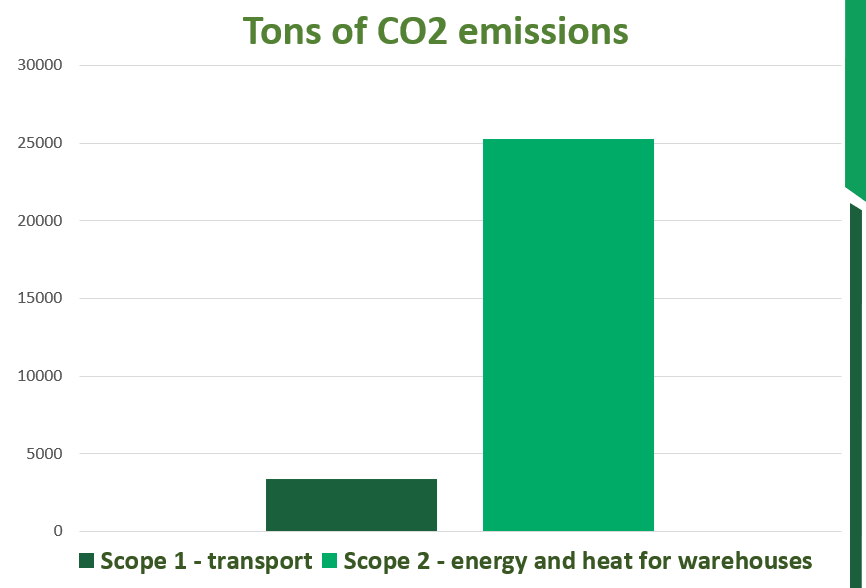
As a result of the considered example, an extremely important and unexpected conclusion was obtained: emissions from the operation of buildings and the storage of goods (Scope 2) are many times higher than emissions from the movement of cars with goods (Scope 1). Although the initial hypothesis assumed a completely opposite result of calculations, since by type of activity the transport company is mainly engaged in delivery, not storage.
Thus, we can see that in order to minimize the carbon footprint from delivery, companies need to switch to modern environmentally friendly means of transportation and energy generation, as well as accelerate trade turnover to reduce the load on warehouses, which, according to the results of the study, turned out to be the most significant generators of greenhouse gas emissions in the delivery procedure. The potential results and payback periods of applying the proposed solutions can be calculated using a special interactive calculator.
The following calculators can be used to calculate and optimize the route, as well as to evaluate transportation by various modes of transport:
There it is necessary to indicate the location of the sender and recipient, the volume and weight of the cargo, the type of vehicle. Considering these factors, the calculator will calculate the most suitable route with the least greenhouse gas emissions. It is also possible to get a breakdown of emissions by source categories (Scope 1 and 2) and get acquainted with the proposals of experts on offsetting emissions from delivery in your company.